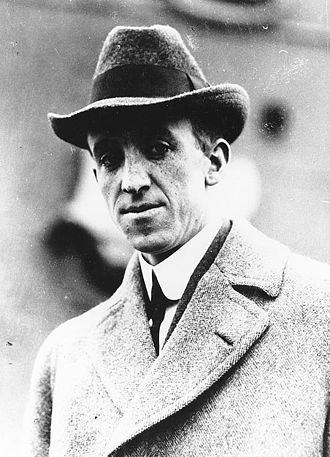Flying off the bow
 Often they sneak up on you. Genuinely historic events, I mean. Indeed, when you look at list of “It Happened Today” type things, the most recent ones frequently appear ephemeral, earthquakes and conferences and sports victories, precisely because they are headline-grabbers rather than things we know from experience still seemed important a century or more later. What might people have thought in late 1910 would be key events from their own time?
Often they sneak up on you. Genuinely historic events, I mean. Indeed, when you look at list of “It Happened Today” type things, the most recent ones frequently appear ephemeral, earthquakes and conferences and sports victories, precisely because they are headline-grabbers rather than things we know from experience still seemed important a century or more later. What might people have thought in late 1910 would be key events from their own time?
Well, how about the one involving Eugene Burton Ely? What’s that? It seems to have vanished and him with it? Well, I don’t know how big a noise it made back then either, at least figuratively. But it was probably kind of loud at the time and it got considerably louder as the years went by.
What Ely actually did, you see, was take off from a ship in an airplane on November 14, 1910. Given the technology of the time, just seven years after the Wright brothers first took off at all, and using an improvised platform on the bow of a cruiser, it sounds like an elaborate and expensive way to die. (Which he did in a plane crash less than a year later, managing to jump from a wrecked plane despite a broken neck, only to die within minutes while ghastly bystanders combed the wreck for souvenirs including his hat.) But the fact is that, like those guys with the steam engines in hydrogen blimps, people do have an incorrigible habit of pushing the limits of technology and it certainly does move things along even if it makes their life insurance premiums a thing of horror.
Planes taking off from ships remained a curiosity through at least the First World War. But it ended only 7 years after his feat. By the late 1920s, aircraft carriers were a reality, though they got more attention in Japan than in the West apparently. Hence the success of the Imperial Japanese Navy, at least from a short-term perspective, in sneaking up on the Americans at Pearl Harbor. And while the Royal Navy’s defeat of the dreaded Bismarck resulted from a successful attack by torpedo bombers from HMS Victorious, the fact that all the Royal Navy had on hand were these obsolescent biplanes underlines that the British still had more faith in surface vessels at that point (the planes were in fact Fairey Swordfish which is probably not a name you could use today).
So does the fact that the Americans had war-gamed successful aerial attacks on Pearl Harbor in 1932 and 1936 and blown off the results. Of course it’s easy to see in retrospect how it would turn out. But a number of people saw it ahead of time.
By that of course I mean in the 1930s. Back in 1911, there must have been some people who saw the implications of Ely’s feat, though it wasn’t until 1933 that he was posthumously awarded the Distinguished Flying Cross. For most people at the time, the reaction must have been either “Those airplane chaps certainly are brave” or “That guy must have a death wish.”
Unless of course it was “Eugene Barton Who”?